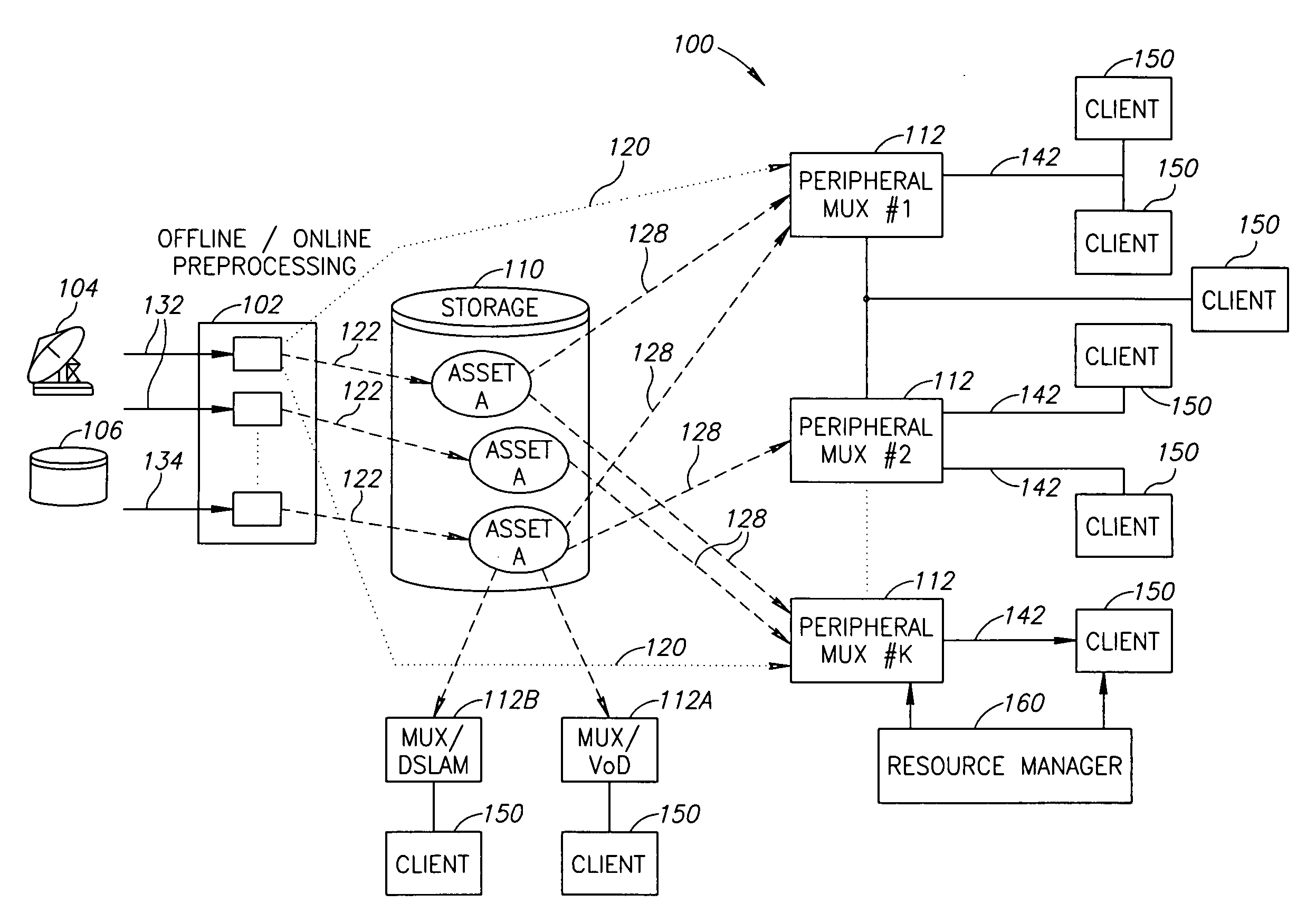Distributed statistical multiplexing of multi-media
a statistical multiplexing and multi-media technology, applied in the field of communication systems, can solve the problems of large amount of bandwidth required for video content delivery, large processing resources, and large processing resources, and achieve the effect of simplifying and speeding up statistical multiplexing and high multiplexing quality
- Summary
- Abstract
- Description
- Claims
- Application Information
AI Technical Summary
Benefits of technology
Problems solved by technology
Method used
Image
Examples
Embodiment Construction
[0082]FIG. 1 is a schematic illustration of a video delivery system 100, in accordance with an exemplary embodiment of the invention. System 100 includes a preprocessing unit 102 which receives video streams and prepares them for statistical multiplexing. In some embodiments of the invention, preprocessing unit 102 receives real time video streams 132, which are being transferred to clients 150. In an exemplary embodiment of the invention, clients 150 are home television sets connected through cable networks to video on demand (Vod) movie servers. The statistical multiplexing allows transmission of a larger number of video movies to clients 150, by lowering the bandwidth allocated to each video stream to an average value, rather than a maximal value.
[0083] The real time video streams may be received from substantially any source, including live production cameras (not shown) and broadcast sources (not shown) outside of system 100. The real time streams may be received through a sat...
PUM
 Login to View More
Login to View More Abstract
Description
Claims
Application Information
 Login to View More
Login to View More - R&D
- Intellectual Property
- Life Sciences
- Materials
- Tech Scout
- Unparalleled Data Quality
- Higher Quality Content
- 60% Fewer Hallucinations
Browse by: Latest US Patents, China's latest patents, Technical Efficacy Thesaurus, Application Domain, Technology Topic, Popular Technical Reports.
© 2025 PatSnap. All rights reserved.Legal|Privacy policy|Modern Slavery Act Transparency Statement|Sitemap|About US| Contact US: help@patsnap.com



